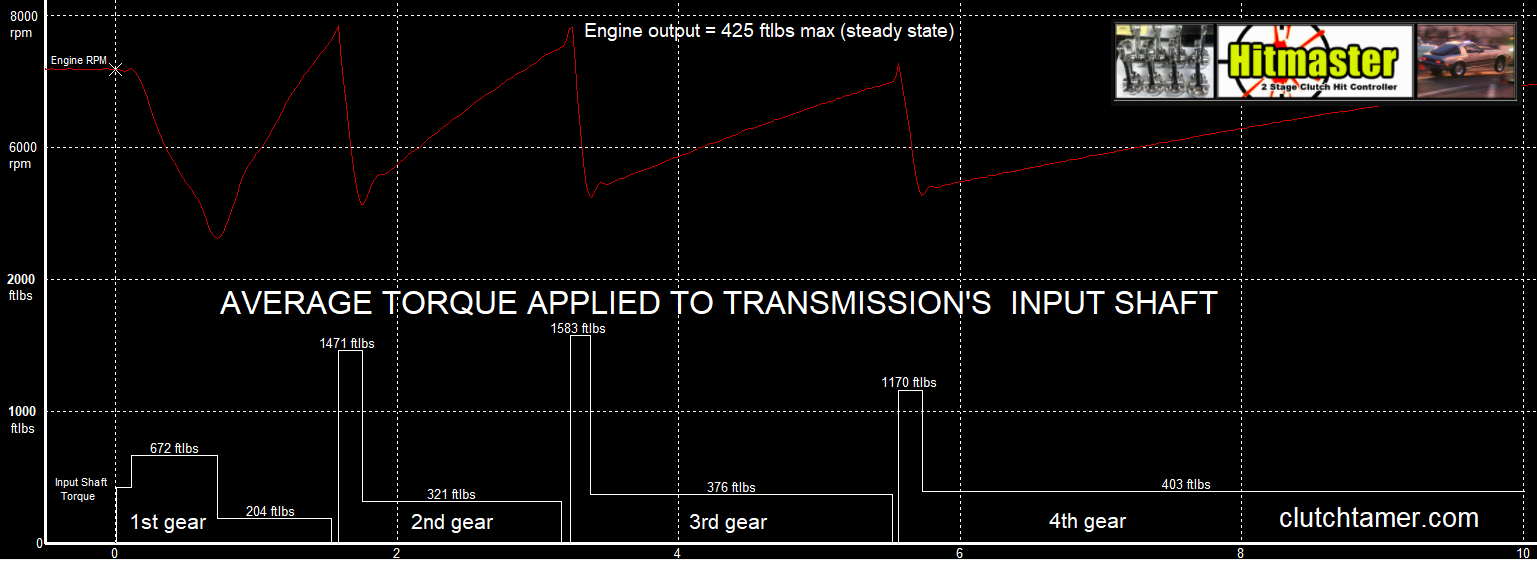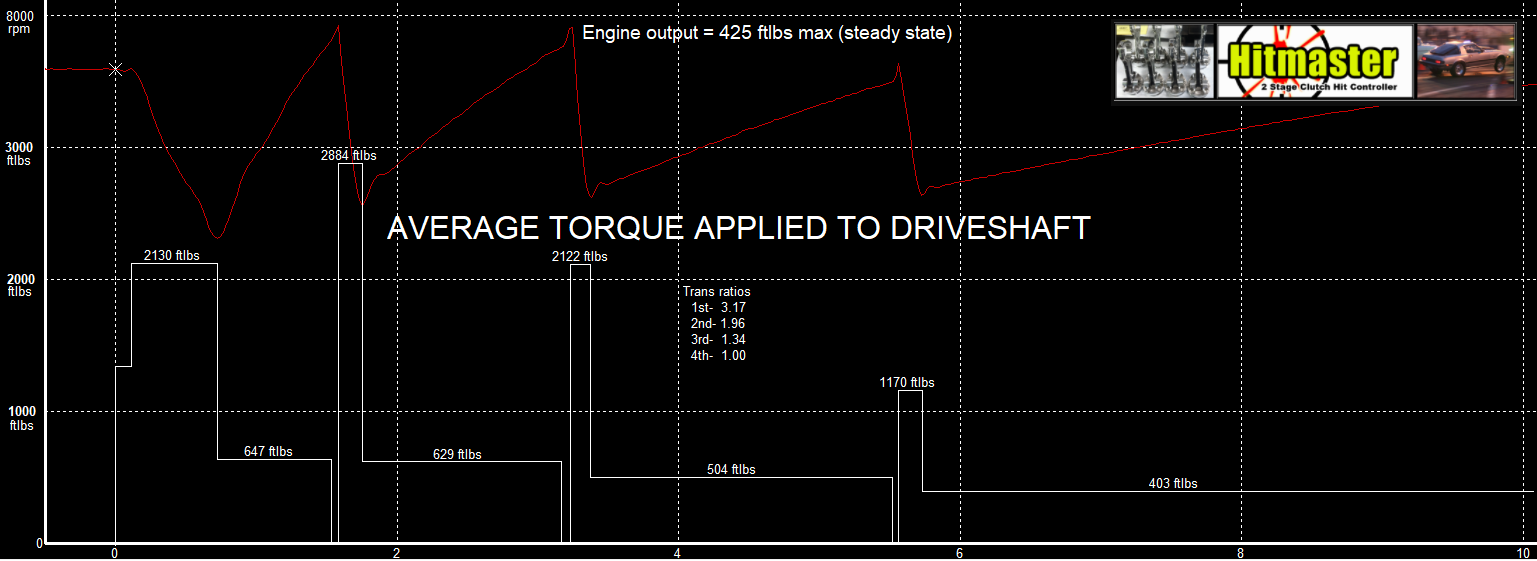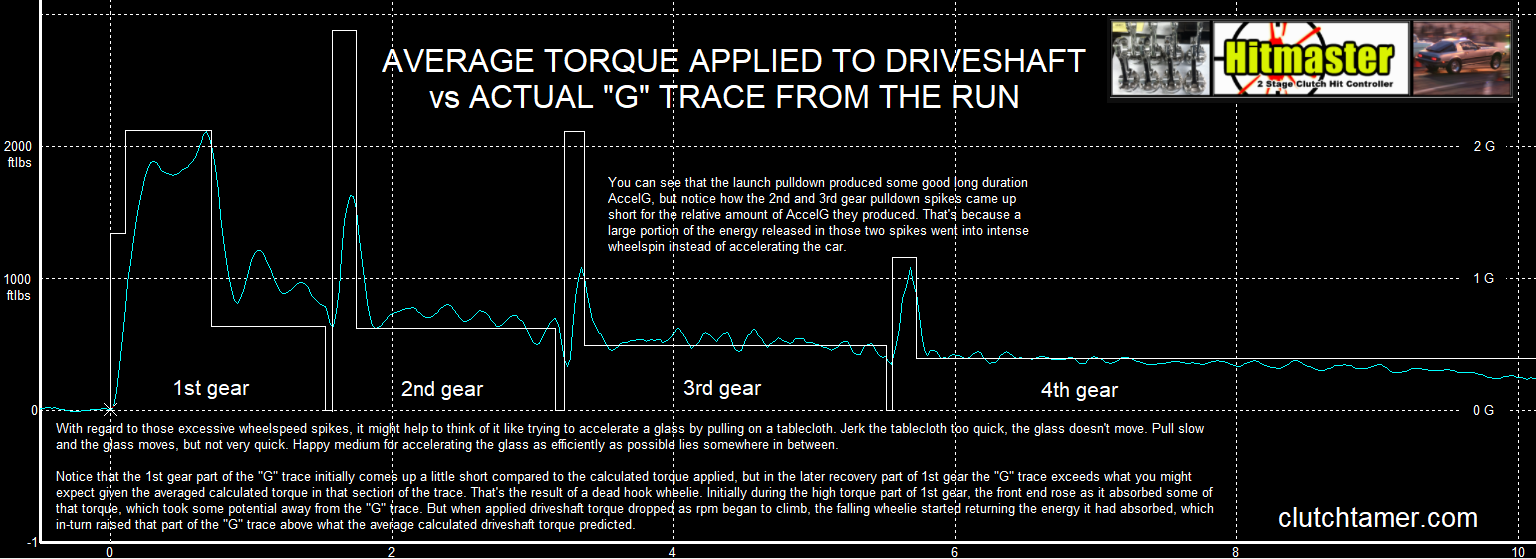Quote:
Originally Posted by joespanova

Using my own as an example , with no change in the bell housing and enough base ( because I don't use a data logger ) to launch the car well enough to keep me near or well into decent 60 fts. I can apparently spin or wheel stand just by varying launch RPM. And a wheel stand could be very high , or very little with spin. So the initial thoughts are outside of the bellhousing ....leaning towards , am I changing the cars characteristics at launch because of how the engines power band comes into play ( way over peak torque ) or right at peak torque. It is likely the clutch CW has some input here.....BUT which has the greater influence?
|
Because you have centrifugal adding clamp pressure with rpm, the higher you launch the harder the clutch hits.
When you are launching way over the engine's peak torque, the clutch hits harder and your engine is likely initially losing rpm during launch. That loss of engine rpm adds torque to the transmission's input shaft. That extra torque due to stored energy exiting the engine's rotating assy, along with a harder hitting clutch, causes excessive wheelspin before the car gets a chance to transfer weight.
When you are launching from a lower rpm closer to your engine's torque peak, the clutch slips more and the engine may or may not lose rpm. If it doesn't lose rpm, the input shaft will only see engine torque during launch. If you launch below the engine's torque peak, the engine will gain rpm during launch. In that case the engine's rotating assy will absorb some of the engine's torque, which will in-turn reduce the torque that the input shaft sees.
Note on the graph below that this 425ftlb engine puts out way more than 425ftlbs when it is losing rpm, and much less than 425ftlbs when it is gaining rpm. That's due to the engine's rotating assy releasing and absorbing energy as it loses or gains rpm...

Here's those calculated input shaft torque numbers multiplied by the transmission ratios to show driveshaft torque...

If you are wondering how accurate those calculated torque numbers might be, here's those calculated driveshaft torque numbers compared to the actual AccelG trace from that pass...




